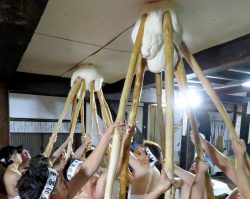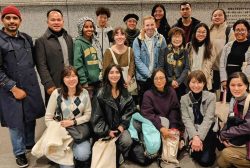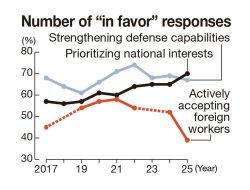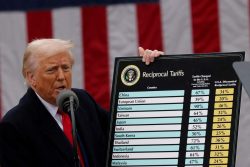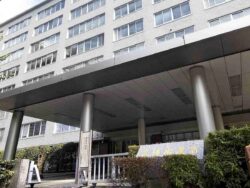16:10 JST, January 31, 2025
Even if teachers’ salaries are raised, the shortage of people willing to become teachers will not be resolved as long as the long working hours remain the same. Educational settings must be turned into attractive workplaces through such means as reducing and simplifying teachers’ workloads.
Teachers’ salaries at public elementary, junior high and high schools will be raised starting next school year. In lieu of overtime, teachers are paid a teaching adjustment allowance that up to now has been uniformly set at 4% of a base salary. There is a plan to raise this allowance in stages to 10% by the 2030 school year.
The teaching adjustment allowance was set at 4% by a law that came into effect in 1972. This percentage was based on teachers’ overtime hours, which were about eight hours per month at the time.
Currently, however, 77% of junior high school teachers and 65% of elementary school teachers exceed the government-set upper limit of 45 hours per month for overtime. The ratio of applicants to the number of positions to be hired in teacher recruitment tests all at elementary, junior high and high schools hit a record low in the 2024 school year. Long working hours have been pointed out as one of the factors.
It is quite natural to change the salary regulations, which are not in line with the actual working conditions. More important, however, will be how to alleviate the long working hours that have become the norm in educational settings.
In raising salaries, the government has set a target of reducing the average amount of overtime work to “30 hours per month,” or 30% below the current level, by the 2029 school year. It is important to deploy effective measures to achieve this goal.
Such workload elements as long meetings and cumbersome paperwork can surely be reduced through on-site adjustment. Principals will need to display leadership. The use of experienced former teachers and others would be effective to deal with parents and guardians.
The Kobe city government intends to end club activities at municipal junior high schools by the autumn of 2026, and shift to local club activities run mainly by private organizations and other entities.
Club activities are said to be a particularly large burden on junior high school teachers. It is hoped that such efforts as appointing outside personnel will be promoted, taking into consideration the actual conditions of local communities and schools.
The central government will increase the number of school personnel by 5,800 in the next school year. The aim is to expand the “subject teacher system” in elementary schools — in which students are taught by a specialist teacher for each subject — from fifth and sixth graders to also include fourth graders. The personnel increase is also meant to raise the number of teachers in charge of giving guidance to students in junior high schools.
It is hoped that reducing teachers’ workloads will make it possible for them to secure more time to spend with children and to research teaching materials, leading to higher-quality education.
The amount of content that schools need to teach is increasing in line with changes in society. Some point out that the amount of material to be taught is too much in comparison to the amount of class time. If the school curriculum guidelines are overstuffed with content, it is necessary for the central government to review the situation.
Teachers have an important job supporting the growth of children. It is vital to create an environment in which they can realize this.
(From The Yomiuri Shimbun, Jan. 31, 2025)
"Editorial & Columns" POPULAR ARTICLE
-

Corporate Interim Earnings: Companies Must Devise Ways to Overcome Trump Tariffs
-

Violations of Subcontract Law: Major Automakers Must Eliminate Old Practices
-

Local Governments’ Tax Revenues: Devise Ways to Correct Imbalances in Tax Sources
-

Takaichi’s Summit with Economics-Minded Trump Successfully Advanced Japan’s Security Interests
-

Lower House Budget Committee: Unrestrained Fiscal Stimulus Is Unacceptable
JN ACCESS RANKING
-

Govt Plans to Urge Municipalities to Help Residents Cope with Rising Prices
-
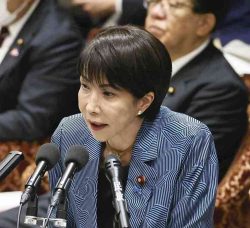
Japan Prime Minister Takaichi Vows to Have Country Exit Deflation, Closely Monitor Economic Indicators
-

Japan to Charge Foreigners More for Residence Permits, Looking to Align with Western Countries
-
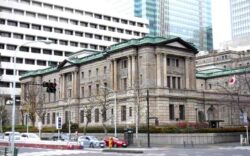
Japan GDP Down Annualized 1.8% in July-Sept.
-
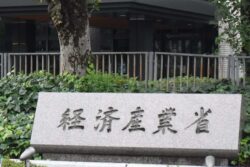
Essential Services Shortage to Hit Japan’s GDP By Up to ¥76 Tril. By 2040


